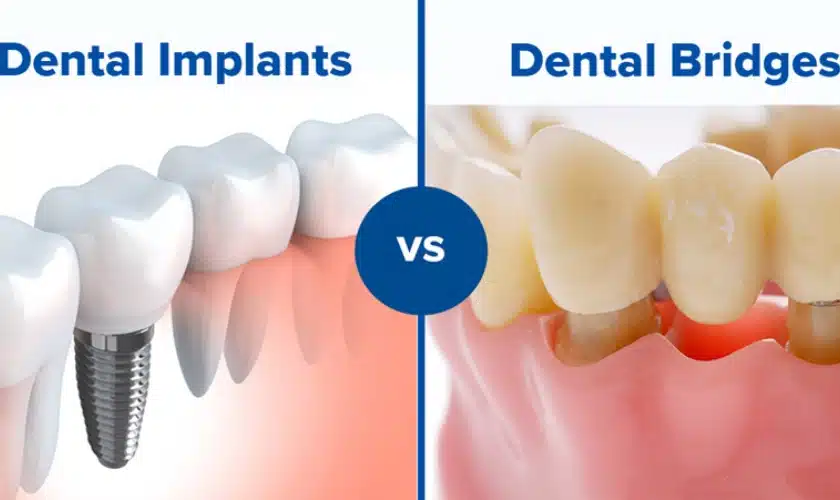The Best Guide To Dental Sense
The Best Guide To Dental Sense
Blog Article
How Dental Sense can Save You Time, Stress, and Money.
Table of ContentsThe Ultimate Guide To Dental SenseAll about Dental SenseWhat Does Dental Sense Do?A Biased View of Dental Sense
are clinical gadgets operatively dental implanted into the jaw to restore a person's capability to chew or their look. They provide support for man-made (fake) teeth, such as crowns, bridges, or dentures. When a tooth is lost as a result of injury or disease, an individual can experience issues such as fast bone loss, malfunctioning speech, or modifications to chewing patterns that result in pain.Oral dental implant systems include a dental implant body and oral implant abutment and might additionally include an abutment addiction screw. Cosmetic dentistry services. The oral implant body is surgically placed in the jawbone in place of the tooth's origin. The oral implant abutment is generally affixed to the implant body by the abutment fixation screw and expands via periodontals right into the mouth to support the connected fabricated teeth
(https://pastebin.com/u/dentalsense1)Structure of The Oral Implant System picking oral implants, talk to your dental company about the possible benefits and threats, and whether you are a prospect for the treatment. Things to consider: Your overall wellness is a vital aspect in figuring out whether you are a good prospect for oral implants, just how long it will take to heal, and exactly how long the implant may remain in place.
Smoking may influence the healing procedure and lower the long-lasting success of the dental implant. The recovery procedure for the implant body may take several months or longer, throughout which time you generally have a momentary joint in place of the tooth. the dental implant treatment: Carefully comply with the dental hygiene guidelines offered to you by your dental company.
The Best Strategy To Use For Dental Sense
Implant failure can cause the need for an additional operation to take care of or replace the dental implant system. Restores the ability to eat Recovers aesthetic look Helps keep the jawbone from shrinking because of bone loss Protects the health and wellness of the bordering bone and gum tissues Assists maintain surrounding (nearby) teeth steady Improves lifestyle Damages to surrounding all-natural teeth during dental implant positioning Injury to the surrounding tissues during surgical treatment, such as sinus perforation Injury during surgical treatment (for instance, crack of bordering jawbone) Inadequate function, such as seeming like the teeth do not bite with each other generally A sensation that the tooth is loosened or twisting in position resulting from an abutment screw loosening Implant body failing (looseness of the implant body) as a result of systemic infection, which might be most likely in people with unrestrained diabetes mellitus due to local infection in bone and gums supporting the implant body as a result of delayed recovery, which may be more probable in people who smoke Difficulty cleansing the gums around the dental implant, resulting in poor dental hygiene Unattended periodontal condition Post-surgical numbness as a result of nerve impingement or damages Constantly notify health and wellness treatment suppliers and imaging specialists that you have dental implants prior to any kind of magnetic resonance imaging (MRI) or x-ray treatments.
FDA is not familiar with any type of adverse occasions reported for MRI or x-ray treatments with oral implants. Dental implants systems are generally made from products that adhere to worldwide agreement requirements of the International Organization for Standardization (ISO) or ASTM International. These criteria have information of what makes a risk-free material.

A dental implant is a structure that changes a missing tooth. With screw-like tools, the surgeon inserts an implant into the jawbone, and it acts as a support for an artificial tooth, called a crown.
Not known Details About Dental Sense
Some individuals are not qualified for dental implant surgical treatment. It is for oral doctors to run on people with: severe illnessuncontrollable metabolic diseasebone or soft cells condition or infectionIf these issues are fixed, a person can have the surgical procedure. In, oral specialists avoid operating people with: If individuals with any of the above go through dental implant surgical procedure, there is a higher threat of the dental implant stopping working.

Oral implant surgical treatment is a tailored procedure. It's not the exact same for everyone. The complying with gives a general overview of what you can anticipate your dentist, oral doctor, periodontist or prosthodontist to do: Put the implant operatively. Give you time to recover. Attach the message and last crown, bridge or denture.
Next off, your doctor will carefully put the oral implant into your jaw. Ultimately, your cosmetic surgeon will certainly rearrange your gums and shut the cut with stitches. If your dental implant is near the front of your mouth, your dental expert will certainly make a momentary tooth for you to put on till you heal. By doing this, you will not have a gap in your smile while you recuperate.
Not known Facts About Dental Sense
During the recovery phase, your jawbone should fuse to the oral implant. This process can take anywhere from 3 to nine months.
As soon as your implant heals, your dental expert can connect the joint (little connector article) and your final reconstruction (crown, bridge or denture). This normally takes concerning one hour Home Page to complete and may call for a second minor surgical procedure. You shouldn't feel any kind of discomfort throughout your oral implant procedure due to the fact that your company will make use of medication to numb your periodontals.
Report this page